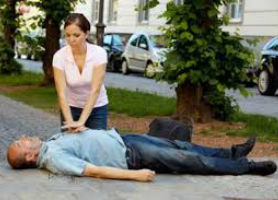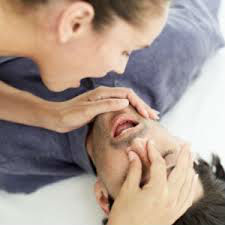How to Help Someone Who is Having a Heart Attack
Check for pulse
First of all, check the pulse by pressing your fingers to the neck of the person, since trying to check it on the wrist will most likely produce confusing results. If a pulse is present, then just call an ambulance and ensure the safety of the person until the help arrives.
If the pulse is absent, immediately call an ambulance or tell someone else to do it for you. After this step you should begin CPR (cardiopulmonary resuscitation).
Cardiopulmonary Resuscitation
First check that the airways are clear. The person could have chocked on some food and you wouldn’t want to start performing CPR while the bit of food is still obstructing the airways. Simply reach into the throat of the person with your finger to ensure that there are no foreign objects to obstruct the passage of the air. Unfortunately this is pretty much the only thing you can do, and if the object is in the person’s trachea, there is nothing you can do about it.
Next, you should lay the person on their back on a flat hard surface. If you are alone, you will have to perform both parts of the CPR yourself, which consists of chest compressions and mouth-to-mouth resuscitation at a rate of 30 compressions to 2 breaths.
Chest Compressions

Chest compressions should be performed at a rate of 100 compressions per minute. This is done by placing the base of your palm on the lower half of the sternum (the bone located in the exact middle of the chest), and with your second palm placed over the first one. It is very important to keep your arms outstretched and press on the chest of the person with your whole weight rather than using the strength of your arms. The depth of compression should be about 5cm. It is also important to gauge your strength based on the size of the person. Naturally, a larger person would require a larger force to be applied.
Chest compressions should be stopped when mouth-to-mouth resuscitation is being performed, and immediately resumed afterward.
Mouth-to-mouth Resuscitation

After you have ensured that there are no foreign objects in the throat of the person, you should begin mouth-to-mouth resuscitation. However, statistics show that if you have no idea what you’re doing or if you panic, then compression-only method is preferable, since it yields a higher chance of survival (13% vs 8%).
To perform mouth-to-mouth resuscitation, first tilt the head of the person backwards by raising their chin and pushing on their forehead. This should clear the airways to prevent the air from going into the person’s stomach. An additional method that is often used is applying slight pressure on the cartilage located on the neck, since this compresses the esophagus and prevents the air from going into it.
Next take a normal breath, and breathe into the person’s mouth while pinching their nose to prevent the air from leaking. This should make the person’s chest rise and fall. The breath should take one second and shouldn’t be too forceful. After two breaths in quick succession, resume chest compressions.
How long should CPR be performed?
Unlike what we see in the movies, where they give a few quick breaths into the person’s mouth, punch their chest and give up, this is very far from real life. In reality, you will have to perform CPR for as long as it takes for the ambulance to arrive. You will have to continue doing it for as long as it takes.
If you do everything correctly, the person’s skin might even go from pale to normal although the person might still be unable to breathe themselves.
Conclusion
The very first thing you should do after verifying the person has no pulse is to call an ambulance. Even though this might take a minute, only an ambulance will be able to rescue the person. Your job is to do everything in your power to keep the person alive until the ambulance arrives.










